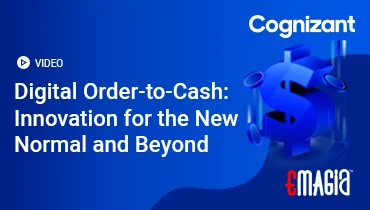Introduction to Cash Application
Cash application is a critical component of the accounts receivable (AR) process, involving the matching of incoming payments to the appropriate customer invoices. This process ensures accurate financial records, timely revenue recognition, and efficient cash flow management.
Understanding Cash Application Elements
The cash application process comprises several key elements that work together to ensure accurate and efficient payment processing:
1. Payment Receipt
Payments can be received through various channels, including:
- Paper checks
- Electronic transfers (ACH, wire transfers)
- Credit and debit card payments
- Virtual credit card payments
Each payment method requires specific handling procedures to ensure accurate processing.
2. Remittance Advice
Remittance advice provides details about the payment, such as:
- Invoice numbers being paid
- Payment amounts
- Discounts or deductions applied
- Any other relevant information
Remittance information can be received alongside the payment or separately via email, web portals, or other means.
3. Invoice Matching
The process of matching payments to the corresponding invoices involves:
- Identifying the correct invoices based on remittance information
- Handling partial payments or payments covering multiple invoices
- Resolving discrepancies or deductions
Accurate invoice matching is essential for maintaining up-to-date financial records.
4. Cash Posting
Once payments are matched to invoices, they are posted to the appropriate customer accounts in the company’s accounting system. This step updates the accounts receivable balances and reflects the payment in financial records.
5. Exception Handling
Not all payments can be matched automatically. Exceptions may include:
- Unidentified payments
- Payments with missing or incorrect remittance data
- Payments for non-existent invoices
These exceptions require manual intervention to resolve and ensure accurate application.
6. Reconciliation and Reporting
The final step involves reconciling applied payments with bank statements and generating reports to:
- Ensure accuracy of the cash application process
- Identify unapplied or partial payments
- Provide insights into accounts receivable status
Challenges in Cash Application
Organizations may face several challenges in the cash application process, including:
- Dealing with multiple payment formats and remittance sources
- Matching payments to invoices with incomplete or inaccurate remittance data
- Managing exceptions and short payments
- Integrating cash applications with other AR processes
These challenges can hinder efficiency and accuracy, leading to potential discrepancies in financial records.
Automating Cash Application
To overcome these challenges, many organizations are turning to automation solutions. Automated cash application systems offer:
- Increased efficiency by processing payments and remittances faster
- Improved accuracy by reducing human error
- Enhanced visibility into payment status and cash flow
- Integration with ERP systems for real-time updates
Advanced technologies such as artificial intelligence (AI), machine learning (ML), and optical character recognition (OCR) further enhance automation capabilities.
Best Practices for Cash Application
To optimize the cash application process, organizations should consider the following best practices:
- Standardize processes to ensure consistency
- Improve communication with customers regarding payment information
- Leverage technology to automate repetitive tasks
- Focus on exception management to resolve discrepancies promptly
- Implement continuous training for AR teams
- Regularly review and update processes to adapt to changing business needs
- Emphasize data quality to ensure accurate financial records
- Monitor key performance indicators (KPIs) to assess process efficiency
- Streamline the order-to-cash cycle for improved cash flow
- Prioritize security and compliance to protect sensitive financial data
How Emagia Enhances Cash Application
Emagia offers a comprehensive solution to streamline the cash application process. By leveraging AI and automation, Emagia’s platform provides:
- Automated payment matching to reduce manual effort
- Real-time integration with ERP systems for accurate financial updates
- Advanced analytics and reporting for better decision-making
- Scalability to accommodate growing business needs
Emagia’s solution helps organizations improve efficiency, reduce errors, and enhance cash flow management.
Frequently Asked Questions
What is cash application?
Cash application is the process of matching incoming payments to the appropriate customer invoices and recording them in the accounting system.
Why is cash application important?
Accurate cash application ensures timely revenue recognition, maintains up-to-date financial records, and improves cash flow management.
What are the main elements of cash application?
The main elements include payment receipt, remittance advice, invoice matching, cash posting, exception handling, and reconciliation and reporting.
What challenges are associated with cash application?
Challenges include dealing with multiple payment formats, incomplete remittance data, managing exceptions, and integrating with other AR processes.
How can automation improve cash application?
Automation increases efficiency, reduces errors, enhances visibility, and integrates with ERP systems for real-time updates.
What technologies are used in automated cash application?
Technologies include artificial intelligence (AI), machine learning (ML), and optical character recognition (OCR).
How does Emagia help with cash application?
Emagia offers an AI-powered platform that automates payment matching, integrates with ERP systems, provides advanced analytics, and scales with business growth.
By understanding and implementing the key elements of cash application, organizations can enhance their financial operations, improve accuracy, and ensure efficient cash flow management.



